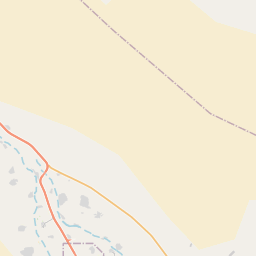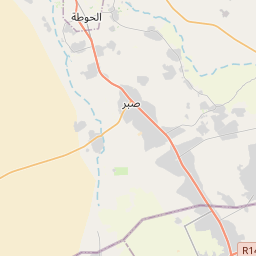Incident on 6 July 2015 [+] Print this page
Location: Livestock market, Tuban District, Lahij Governorate [+]
Country: Yemen [+]
Violation types: Violation of International Law [+]
Description
According to Amnesty International: "VIOLATIONS OF INTERNATIOAL LAW: HUNDREDS OF CIVILIANS KILLED IN COALITION AIRSTRIKES [...] Since 25 March 2015, thousands of airstrikes by Saudi Arabia-led coalition forces have killed hundreds of civilians all over Yemen. The eight strikes investigated by Amnesty International for this briefing killed at least 141 civilians and injured 101, most of them children and women, in southern region of Yemen. While the scope of this briefing is limited to the specific geographic area of southern Yemen, Amnesty International has investigated civilian casualties resulting from unlawful coalition airstrikes in other parts of the country, notably in and around the capital, Sana’a, and the northern city of Sa’da, the most frequent target of such strikes. Coalition strikes which killed and injured civilians and destroyed civilian property and infrastructure investigated by Amnesty International have been found to be frequently disproportionate or indiscriminate. In some instances Amnesty International found that strikes appeared to have apparently directly targeted civilians or civilian objects. International humanitarian law prohibits deliberate attacks on civilians and civilian objects, and attacks which do not discriminate between civilians/civilian objects and combatants/military objectives, or which cause disproportionate harm to civilians/civilian objects in relation to the anticipated military advantage which may be gained by such attack. Such attacks constitute war crimes. The pattern of attacks, which since the beginning of the coalition air bombardment campaign on 25 March 2015 have continued to cause civilian casualties, and the lack of investigations to date into such incidents raise serious concerns about an apparent disregard for civilian life and for fundamental principles of international humanitarian law, not only by those planning and executing the strikes but also by the exiled Yemeni government, at whose behest Saudi Arabia-led coalition forces are acting. [...] On 6 July, a day prior to the airstrikes on the mosque in Waht, coalition forces bombed the livestock market in Fayush, north of Aden in Lahj governorate. The strike, the deadliest hitherto reported, killed some 40 people and injured scores. Adam Hassan Omar, a 52-yearold father of 11 who was injured in the strike told Amnesty International: “I went to the market to see if I could sell three goats for a better price than I bought them. I used to work as a daily labourer mostly in construction in Crater (Aden), but since the war I have not gone there. It’s difficult to get there now and there is no work there anyway. I try to earn a little money buying and selling goats and sheep. I heard a plane above but did not worry; I did not think they would bomb a market. The plane was going around above for quite a while. Then the explosion happened. I remember feeling as if a strong wind pushed me, transported me and a strong pain as if I had been cut in half. Then I fainted and woke up here [in the hospital]. I don’t know who brought me here”. Shrapnel slashed through Adam’s abdomen, causing damage to his internal organs. Doctors who treated him said they had to remove some 15cm of intestine and his spleen. Local residents and sellers in the adjacent food market told Amnesty International that at the time of the airstrike there were no unusual gatherings or activities in the market. “People were buying and selling goats and sheep and a few cows. They were normal people, some desperate people who had reluctantly come to sell their animals because they have no other income to feed their children,” a market seller said. “There was no fighting around here and there were no Huthis, just some unlucky people. If the bomb had fallen few meters away I could have been killed, just like they were killed. This is what God decided,” a local resident said. Another resident described the bloodshed after the explosion: “It was a massacre, body parts and blood of humans and animals were mixed together. It was a very painful sight and it was difficult to make sense of what was happening and to deal with it”. Yet another resident said that his cousin was missing since the market bombing and he feared that he had been killed there. “After suhur he stayed up for an hour or so and then went to the market and never came back. Maybe he was injured and is in a hospital somewhere and cannot contact us [his family] or maybe he was killed and buried with the unidentified bodies.” Relatives and witnesses told Amnesty International some of the victims had been blown apart in the blast but there were no adequate systems available to allow for post-burial ID of unclaimed bodies or remains. Hospital workers told Amnesty International that they had received a large number of civilian injured from the strike. The sandy soil at the site of the strike absorbed the impact and likely lessened the spread of shrapnel in the area. No remains were found from the bomb dropped by the coalition plane, but the crater – some three meters deep and four meters in diameter – indicates a likely 500-1,000 lbs (200 – 450 +Kg) bomb (similar to the ones used in many other attacks). Remains of animal carcasses were still strewn around when Amnesty International visited the site several days later. Amnesty International could not trace most of the victims and families of victims of the attack, as most were not local residents but people who were visiting the market from surrounding areas. Amnesty International could not establish with certainty whether any members of the Huthi armed group were present at the livestock market at the time of the airstrike. However, information obtained from multiple sources, including witnesses and residents, indicate there was no combat or other military activity at the time of the attack and that most if not all the victims were civilian bystanders not involved in the conflict. The attack violated the principle of distinction, a cornerstone of international humanitarian law, which requires all parties to a conflict to: “…at all times distinguish between the civilian population and combatants and between civilian objects and military objectives…”, and which defines military objective as “those objects which by their nature, location, purpose or use make an effective contribution to military action and whose total or partial destruction capture or neutralization, in the circumstances ruling at the time, offers a definite military advantage.” Military advantage may not be interpreted so broadly as to render the rule ineffective. Even if some combatants had been present at the site this would not have justified launching an attack on a market, which was sure to cause large scale civilian casualties and fatalities and which was not only disproportionate but also indiscriminate." [+]
Perpetrator units
| Name | Other Names | Classification |
|---|---|---|
| Operation Restoring Hope [+] |
Arab Coalition
Arab Coalition Forces Arab Coalition to restore legitimacy in Yemen Gulf Arab coalition Hope Restoration Operation Joint Forces Operation Renewal of Hope Operation Storm of Resolve Saudi-led Arab Coalition Saudi-led Coalition coalition forces operations Renewal of Hope |
Air Force
[+]
Army [+] Joint Operation [+] Military [+] Navy [+] |
Sources
| Publication Date | Publisher | Publication Title | Access Date | Archive Link |
|---|---|---|---|---|
| 18 August 2015 | Amnesty International | Nowhere safe for civilians': Airstrikes and ground attacks in Yemen (Index MDE 31/2291/2015) | 19 January 2021 |












